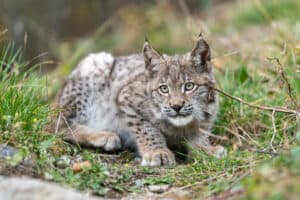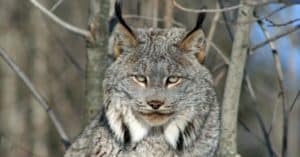Lynxes are solitary cats that live in the far regions of North America, Europe, and Asia’s northern woodlands. Their thick, gorgeous fur keeps them warm throughout the cold winter months. The coat varies in color depending on the climate they live in. Those in the southern areas usually have short hair, smaller paws, and are dark-skinned, while those on the northern side have thicker coats, more giant paws, and lighter ones.
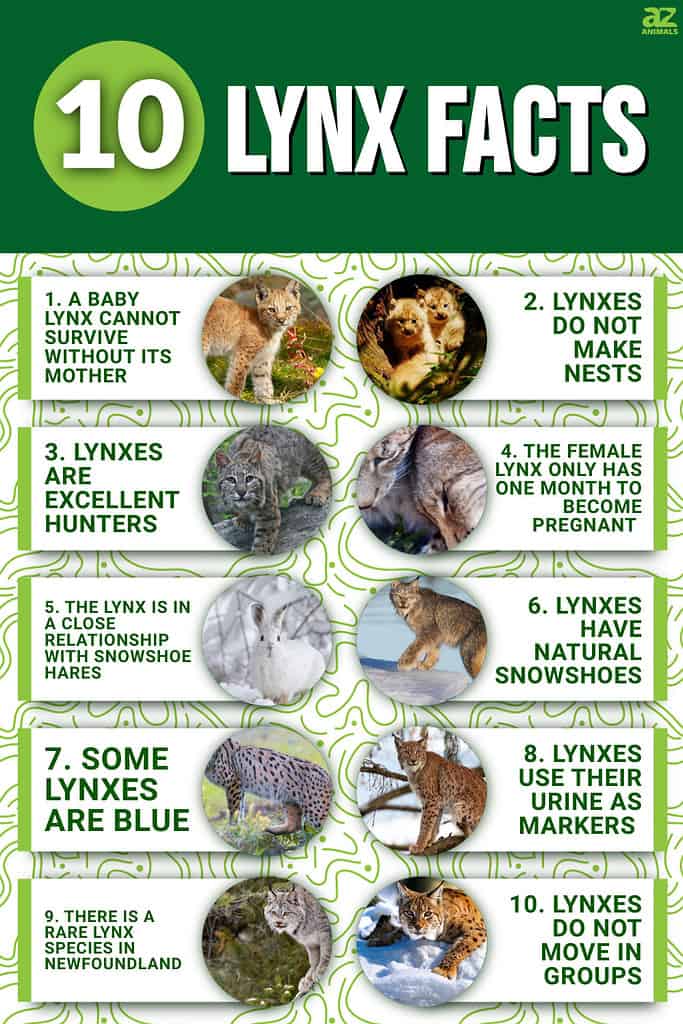
There are four different species of lynx. These include the Eurasian or Siberian lynx (Lynx lynx), Canadian lynx (Lynx canadensis), bobcat (Lynx rufus), and the Spanish or Iberian lynx (Lynx pardinus). Although nicknamed the Persian lynx or African lynx, the caracal is not part of this genus.
The lynx’s excellent vision has earned its legendary status in many civilizations’ mythologies. The cat is a creature in Greek, Norse, and North American mythology that sees what others cannot and can expose hidden secrets.
Lynxes are superb hunters with outstanding hearing (the tufts on their ears serve as a hearing aid) and vision so sharp that they can see a mouse from a distance of 250 feet.
In addition to these, there are some incredible things to know about this amazing cat. Here are ten astonishing lynx facts.
1. A baby lynx cannot survive without its mother
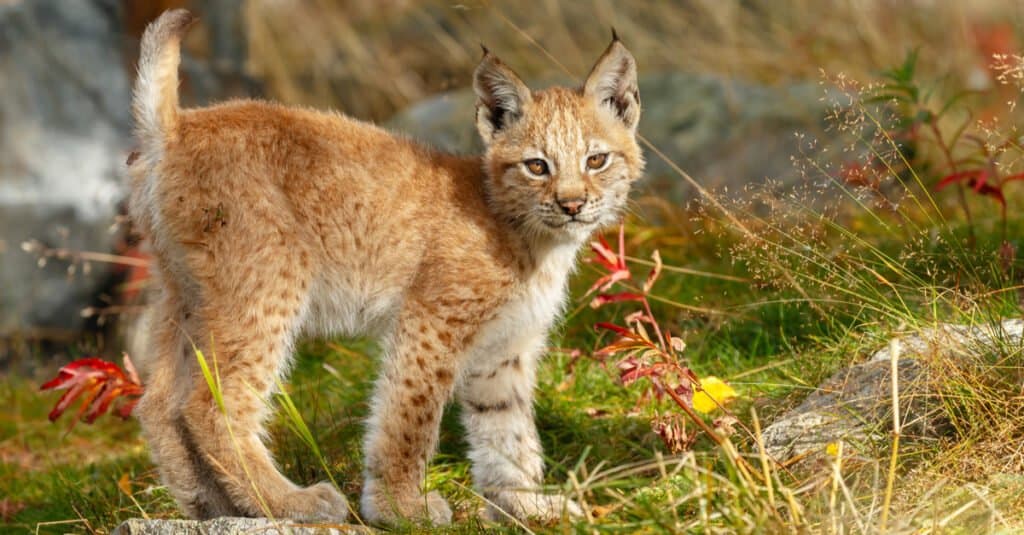
Without the mother, the young lynx would not survive the first winter.
©Menno Schaefer/Shutterstock.com
Without the mother, the young lynx would not survive the first winter. This is because the kittens develop very slowly and don’t open their eyes until after ten days. They can’t go out until about five weeks after birth, and weaning comes after two months. Young lynx may survive on their own at ten months, although they typically stay with their mother for close to a year and do not reach full maturity until they are two years old.
2. Lynxes do not make nests
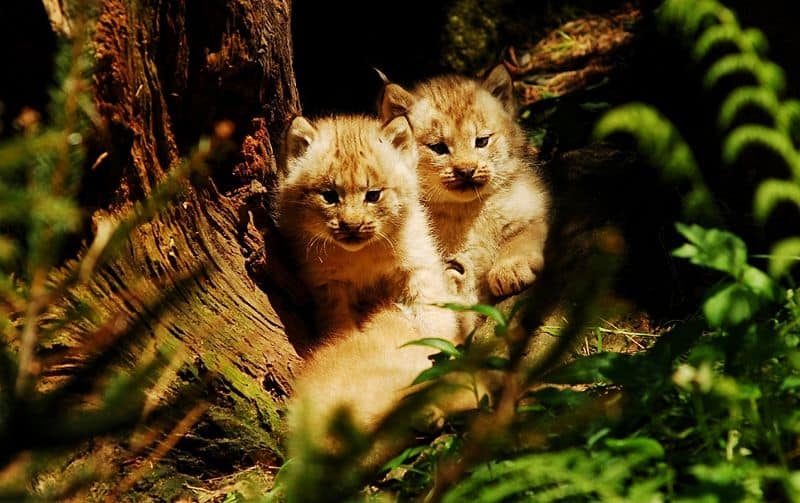
Female lynxes raise their offspring in a natural hidden lair like this tree cave.
©Zoo Ostrava – Public Domain
Female lynxes do not construct nests. They like to raise their offspring in a natural, hidden lair (behind a cliff ledge, in a tree cave, or in dense vegetation).
3. Lynxes are excellent hunters
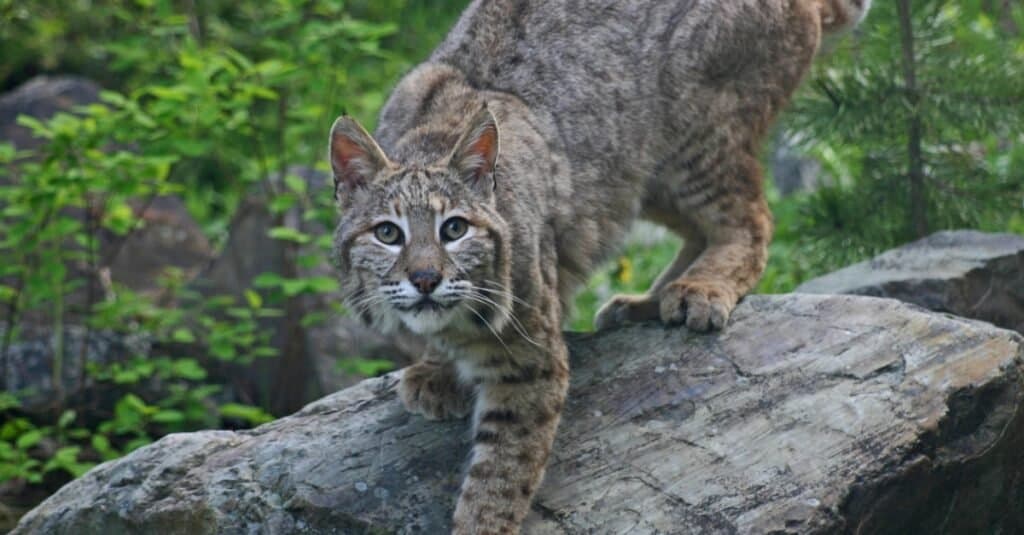
Instead of pursuing their victim, lynxes track and then ambush them.
©iStock.com/Anita Elder Design
Lynxes are formidable predators. They’ll go after any animal they feel they can take down. They don’t run as fast or as powerfully as some of their feline relatives; therefore, they hunt by sight and hearing. Because they dislike running after prey, they will approach quietly and pounce when the time is appropriate. Instead of pursuing their victim, they track and then ambush them. The rugged, forested environment makes this easier for them. A lynx may leap 6 feet into the air to hit a bird as it takes flight.
4. The female lynx only has one month to become pregnant
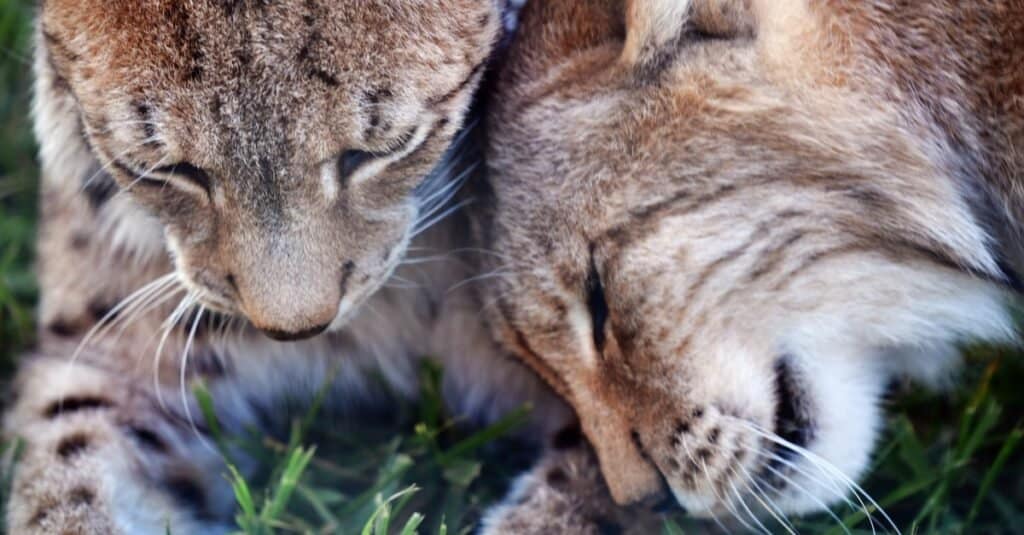
The mating season is short for lynxes, only lasting from February to March.
©Panagiotis Komninelis/Shutterstock.com
For lynx, the mating season is short. It’s similar to the 1800s wooing era. It lasts from February to March, and the pregnancy period is between 63 and 72 days. There’s only a little window of opportunity for potential mates. In their search for a mate, the males are fiercely competitive. The animal, which is otherwise silent, makes a high-pitched shriek that concludes in a protracted wail and engages in intense bouts with other male candidates.
5. The lynx is in a close relationship with snowshoe hares

The lynx’s survival depends upon a healthy population of snowshoe hares in its habitat.
©Jim Cumming/Shutterstock.com
Snowshoe hares and lynx are so closely related that as the hare population declines, the lynx population also declines. Then, if the population rises again, the lynx population will increase too. Lynx must rely almost entirely on hares (90 percent of their diet) because there are so few good alternatives. It’s a straightforward representation of the food chain, and the most popular prey of lynx is hares. They will also go after deer and birds, but only to a lesser extent. Birds aren’t worth the trouble, and deer are too much of an effort for the risk of a foot in the head.
6. Lynxes have natural snowshoes
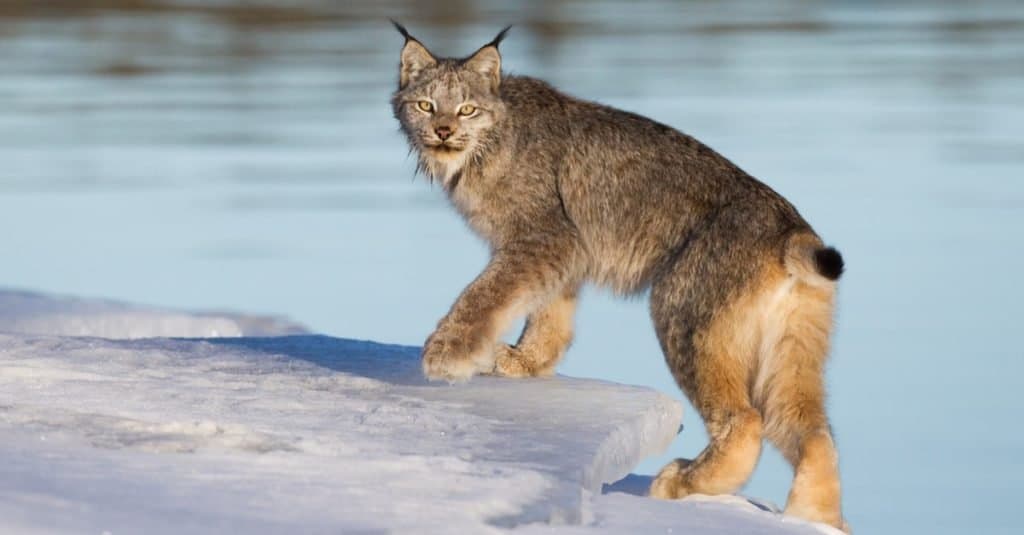
Lynxes can be found in cold climates such as North America, Europe, and Asia.
©Jukka Jantunen/Shutterstock.com
Lynxes can be found in cold climates such as North America, Europe, and Asia. Thanks to their thick, puffy coats, they enjoy the cold. They have a lot of fur on their paws, keeping their extremities warm. Lynxes have built-in snowshoes. When their feet strike the ground, they will extend out to properly distribute their weight, just like when you go around on snowshoes to make your legs bigger so you don’t slip on the ice and snow.
7. Some lynxes are blue
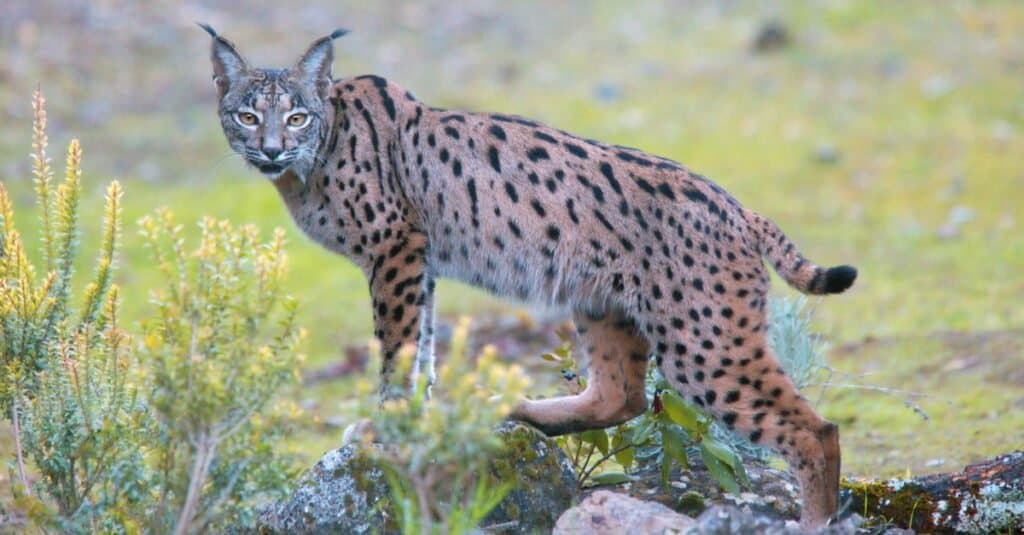
If you happen to chance upon a blue lynx in the wild, its color is the result of a genetic abnormality.
©tony mills/Shutterstock.com
A genetic abnormality in lynx can cause them to turn blue. They’re known as blue lynx, although it’s only a genetic mutation. Other colors include everything from reddish-brown to plain grey. Consider yourself fortunate if you come across a blue lynx in the wild.
8. Lynxes use their urine as markers

Lynxes will mark their territory by spraying trees with their urine, as well as scraping the ground or tree trunks with their hind feet.
©iStock.com/Korbinian Mueller
Lynxes mark their territory by spraying trees with their urine or scraping the ground and tree trunks with their hind feet. They also leave their scent by rubbing their heads and necks on objects like several other cat species.
9. There is a rare lynx species in Newfoundland
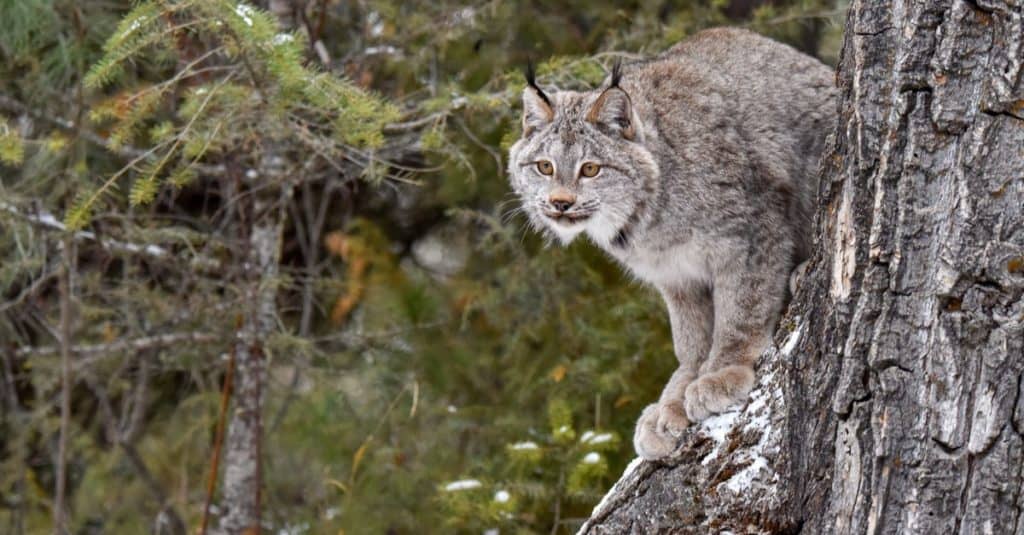
While experts believe the lynx population on Newfoundland genetically diverged from the mainland
Canada lynx
around 20,000 to 33,000 years ago, there are little genetic or morphological differences between them and the Canada lynx, pictured above.
©Evelyn D. Harrison/Shutterstock.com
In Newfoundland, a larger lynx subspecies have been discovered and given the name Newfoundland Lynx. It’s not a common species, and it’s been known to take down caribou, which are much bigger than a typical hare.
10. Lynxes do not move in groups
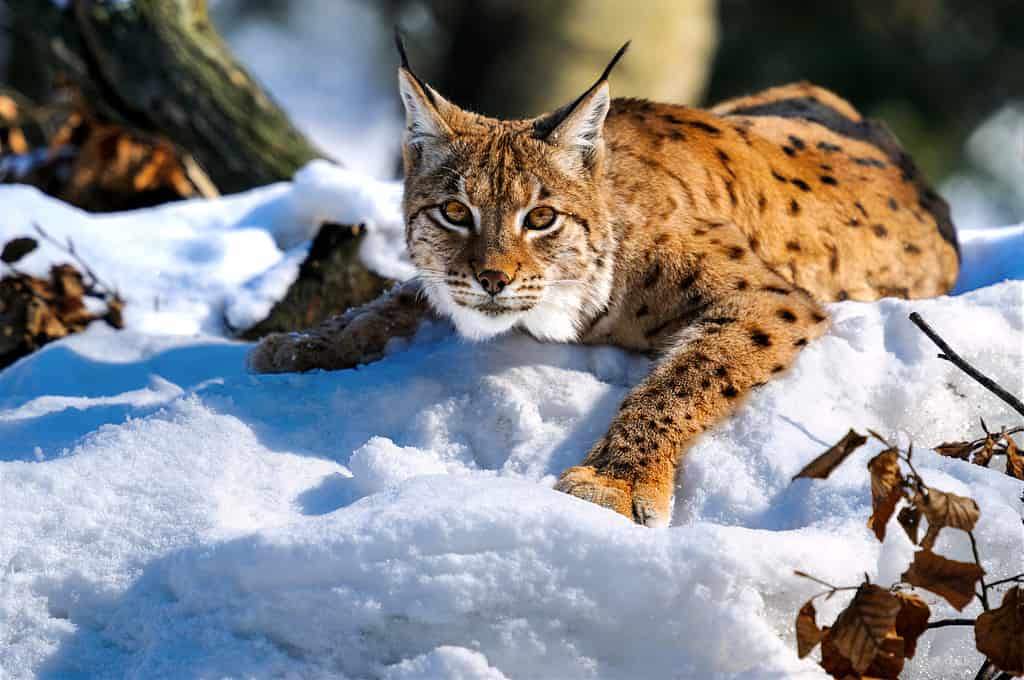
Lynxes prefer a solitary existence.
©iStock.com/Kyslynskyy
Lynxes are solitary animals that spend most of their lives on their own. They like to travel alone and keep to themselves. They get together when the female lynx is raising her offspring or when it’s time to mate. Kittens that have recently separated from their mother may travel and hunt together for many months before splitting up.
The photo featured at the top of this post is © iStock.com/Korbinian Mueller
Thank you for reading! Have some feedback for us? Contact the AZ Animals editorial team.



